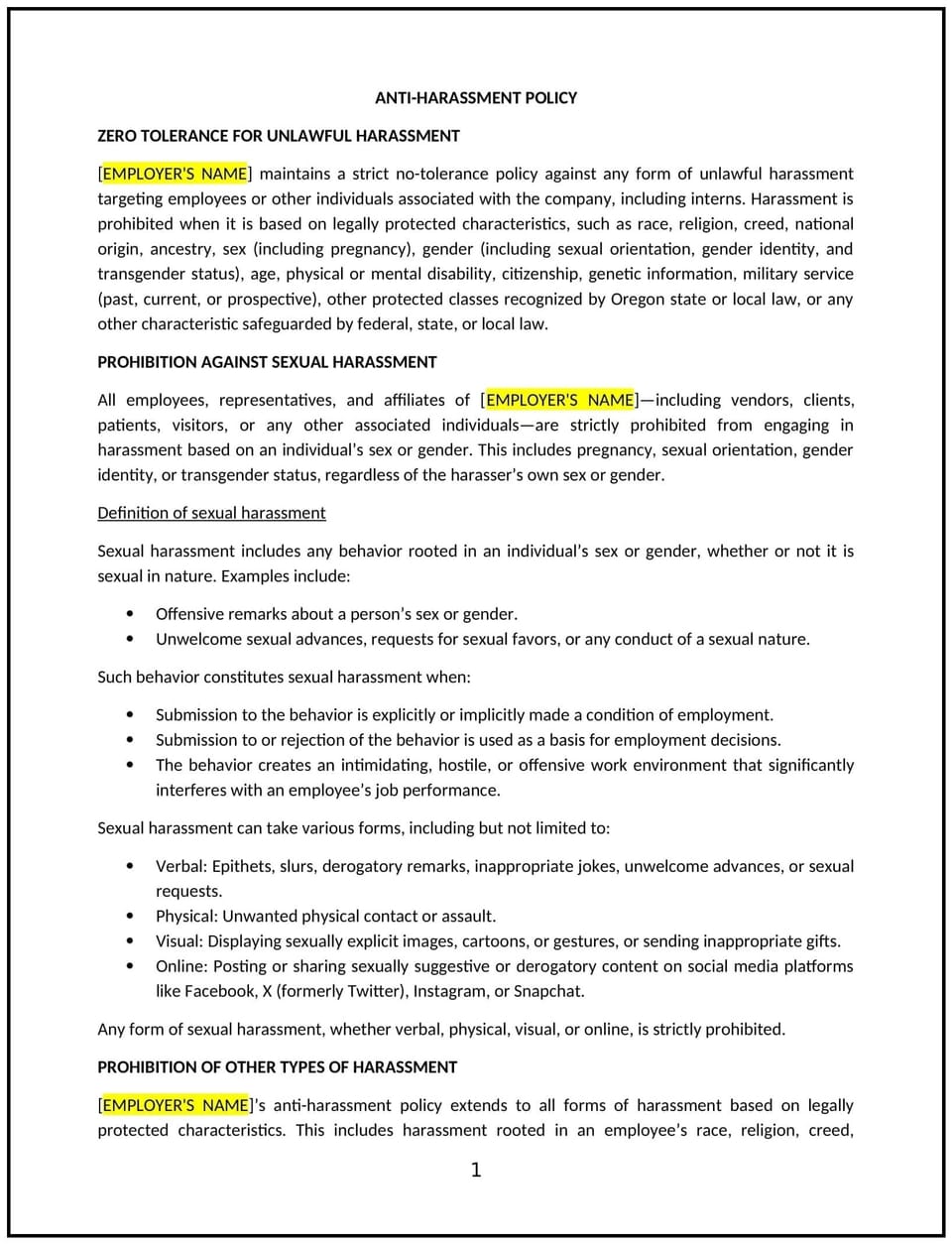Anti-harassment policy (Oregon): Free template

Anti-harassment policy (Oregon)
This anti-harassment policy is designed to help Oregon businesses create a respectful and inclusive work environment. It outlines procedures for identifying, reporting, and addressing harassment.
By adopting this policy, businesses can promote a positive workplace culture, reduce conflicts, and support employee well-being.
How to use this anti-harassment policy (Oregon)
- Define harassment: Clarify what constitutes harassment, such as verbal abuse, intimidation, or discrimination.
- Establish reporting procedures: Outline steps for employees to report harassment, including anonymous reporting options.
- Address consequences: Specify penalties for harassment, such as warnings, suspension, or termination.
- Provide support: Offer resources for employees affected by harassment, such as counseling or mediation.
- Train managers: Educate supervisors on recognizing harassment and enforcing the policy.
- Review and update: Assess the policy annually to ensure it aligns with evolving business needs and legal requirements.
Benefits of using this anti-harassment policy (Oregon)
This policy offers several advantages for Oregon businesses:
- Promotes respect: Encourages a culture of respect and inclusivity, reducing conflicts and improving morale.
- Supports employees: Provides resources for those affected by harassment, fostering a supportive environment.
- Enhances productivity: Reduces distractions and stress, leading to higher employee performance.
- Builds trust: Demonstrates the business’s commitment to employee well-being and a positive workplace culture.
- Aligns with best practices: Offers a structured approach to managing workplace harassment.
Tips for using this anti-harassment policy (Oregon)
- Communicate the policy: Share the policy with employees and include it in the employee handbook.
- Provide training: Educate managers on recognizing harassment and enforcing the policy.
- Monitor compliance: Regularly review workplace interactions and address any issues promptly.
- Address incidents promptly: Take corrective action if harassment is identified, ensuring consequences are enforced.
- Update regularly: Assess the policy annually to ensure it aligns with evolving business needs and legal requirements.
Q: How does this policy benefit businesses?
A: By promoting respect and inclusivity, businesses can reduce conflicts, enhance productivity, and support employee well-being.
Q: What types of behavior are typically considered harassment?
A: Harassment includes verbal abuse, intimidation, discrimination, and any behavior that creates a hostile environment.
Q: How can employees report incidents of harassment?
A: Employees can report incidents through designated channels, such as a hotline, email, or in-person reporting to a supervisor.
Q: What should businesses do if an incident of harassment occurs?
A: Businesses should address the incident promptly, provide support to affected employees, and enforce consequences for the perpetrator.
Q: How often should businesses review this policy?
A: Businesses should review the policy annually or as needed to ensure it aligns with evolving business needs and legal requirements.
This article contains general legal information and does not contain legal advice. Cobrief is not a law firm or a substitute for an attorney or law firm. The law is complex and changes often. For legal advice, please ask a lawyer.


